.png)
Revolutionizing Living Spaces: Power of Home Automation
Content Summary
Home automation integrates devices for centralized control. It evolves from timers to sophisticated networks. It offers vast benefits: convenience, security, and efficiency. Smart devices like thermostats, lighting systems, and security cameras enhance functionality. Compatibility considerations and cost reduction strategies are crucial for successful implementation. Home automation promises revolutionary changes. It transforms how we interact with our living spaces.
Table of Content
Revolutionizing Living Spaces: Power of Home Automation
Components of Home Automation Systems
-
Smart Devices
-
Centralized Control Systems
-
Communication Protocols
Smart Home Integration and Interoperability
-
Compatibility Considerations
-
Integration with Existing Systems
-
Energy Efficiency and Cost Savings
-
Optimized Energy Consumption
-
Cost Reduction Strategies
Enhanced Security and Safety Features
-
Remote Monitoring and Alerts
-
Automated Safety Protocols
-
Convenience and Comfort Enhancements
-
Personalized Environment Control
-
Voice and Gesture Commands
Health and Wellness Integration
-
Smart Health Monitoring Devices
-
Environmental Health Optimization
-
Home Automation for Aging in Place
-
Assistive Technologies
-
Enhanced Accessibility Features
Considerations and Best Practices for Implementation
-
Planning and Design Phase
-
Installation and Setup
Conclusion
FAQs
Home automation, or smart home technology, integrates devices and systems for centralized control. It automates functions like lighting, HVAC, security, and entertainment. Previously, it was just simple timer-based systems. Now, sophisticated networks of interconnected devices are here. These devices can now be controlled remotely via smartphones or voice commands.
The benefits of a home theater installation Marietta ga are vast. They offer convenience by enabling efficient remote management of homes. Furthermore, it enhances security through advanced surveillance and access control features. Additionally, it promotes energy efficiency. Optimizing resource usage based on real-time data and user preferences.
Home automation marks a significant shift. It impacts how we interact with our living spaces. It provides unmatched convenience, security, and efficiency.
Different Elements of Home Automation Systems
Smart Devices
Smart devices are integral to home network installation services, offering advanced functionality and connectivity. Smart thermostats regulate indoor temperatures efficiently, optimizing comfort and energy usage.
Smart lighting systems provide customizable illumination, enhancing ambiance and energy savings. Additionally, smart security cameras offer remote monitoring and surveillance capabilities, bolstering home security.
Centralized Control Systems
Centralized control systems serve as the command center for managing smart devices. Hubs and controllers coordinate communication between devices, enabling seamless integration and control. Mobile applications offer convenient access. Users can monitor and adjust settings remotely.
Communication Protocols
Communication protocols facilitate data exchange between smart devices and control systems. Wi-Fi connectivity enables wireless communication, offering flexibility and scalability.
Zigbee and Z-Wave protocols provide low-power, mesh networking capabilities. Ideal for connecting multiple devices over extended ranges.
Smart Home Integration and Interoperability
Compatibility Considerations
Interoperability challenges arise with diverse smart devices; outdoor entertainment becomes crucial. The importance of standardization cannot be overstated for seamless operation.
Integration with Existing Systems
Deciding between retrofitting and new installations poses considerations. Seamless integration solutions alleviate compatibility issues.
Energy Efficiency and Cost Savings
Optimized Energy Consumption
Smart thermostat features enable precise energy management. Lighting automation brings about significant energy savings.
Cost Reduction Strategies
Energy monitoring and management tools facilitate cost-effective usage. Dynamic pricing integration optimizes expenses further.
Enhanced Security and Safety Features
Remote Monitoring and Alerts
Surveillance camera capabilities ensure comprehensive monitoring. Smart lock functionality enhances access control.
Automated Safety Protocols
Fire and carbon monoxide detection systems offer proactive safety measures. Water leak detection systems prevent damage by alerting users promptly.
Convenience and Comfort Enhancements
Personalized Environment Control
Customized lighting scenes create ambiance according to preferences. Automated climate control maintains optimal comfort levels effortlessly.
Voice and Gesture Commands
Integration with virtual assistants enables intuitive control. Gesture recognition technologies offer futuristic interaction possibilities.
Health and Wellness Integration
Smart Health Monitoring Devices
Fitness trackers promote an active lifestyle with real-time data monitoring. Sleep monitoring systems ensure restorative sleep patterns.
Environmental Health Optimization
Air quality monitoring devices safeguard against pollutants. Allergen detection and mitigation systems create healthier indoor environments.
Home Automation for Aging in Place
Assistive Technologies
Remote health monitoring systems provide peace of mind for caregivers. Fall detection systems offer immediate assistance in emergencies.
Enhanced Accessibility Features
Smart home modifications cater to specific accessibility needs. Voice-activated controls simplify interaction for elderly residents.
Considerations and Best Practices for Implementation
Planning and Design Phase
Assessing needs and requirements lays the foundation for a successful implementation. Budgeting and cost estimation ensure financial feasibility throughout the project.
Installation and Setup
Choosing between DIY and professional installers like RMS Installs depends on complexity and expertise. Testing and troubleshooting guarantee a smooth transition to fully functional home automation.
Conclusion
Home automation, or smart home technology, revolutionizes living spaces. It integrates devices for centralized control, automating lighting, HVAC, security, and entertainment. From timers to networks, it allows remote control via smartphones or voice commands. The benefits are unmatched: convenience, security, efficiency.
Smart devices and communication protocols seamlessly enhance daily lives. With careful planning and implementation, home automation transforms homes into intelligent, interconnected environments.
FAQs
What is home automation?
Home automation integrates devices for centralized control, enhancing convenience and efficiency.
How does home automation benefit users?
Home automation offers unmatched convenience, security, and energy efficiency.
What components are essential for a home automation system?
Smart devices, centralized control systems, and communication protocols are key components.

Explore 0%* APR financing for your project
*0% interest is for promotional period only.






